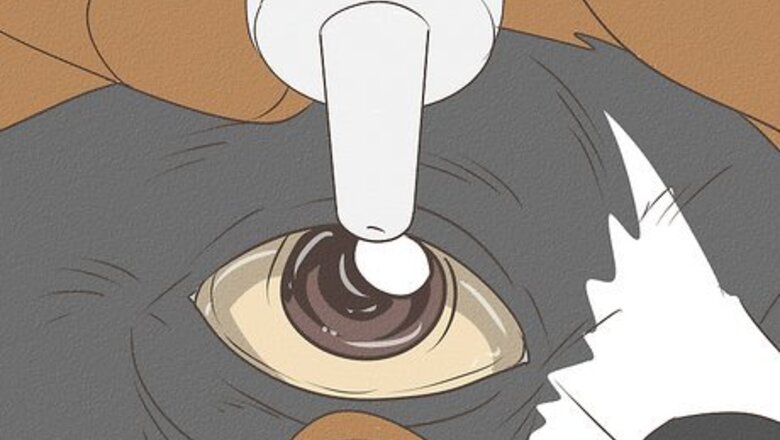
views
- Treat a bulging eye infection with antibiotics or corticosteroid eye drops, along with any medications that your vet prescribes.
- Schedule surgery for your cat if they have any traumatic injuries that they need to have treated.
- Ask your vet for treatment advice regarding long-term health issues like glaucoma, feline herpesvirus, or cancer.
- Examine your cat's injury carefully at home, but take them to the vet as soon as possible to get a formal diagnosis.
Treatment Options

Administer antibiotics, corticosteroids, and other medications if there's an infection. Treating a bulging eye due to a bacterial infection involves a regimen of antibiotic or corticosteroid eye drops, or a combination of the two. Be sure to apply eye drops and any other medications according to the vet’s instructions. In cases of injury, the vet will also prescribe anti-inflammatories and antibiotics, either in the form of eye drops or pills. Be sure to administer these as directed.
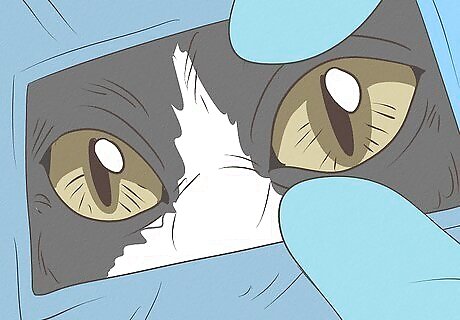
Visit a veterinary professional to get traumatic injuries surgically repaired. If the eye is dislodged and eye socket damaged, the vet will need to perform surgery to put the eye back into place. Alternatively, if the eye is not salvageable, they will remove it. The vet will also place stitches and stents at the surgical site. These will be removed in one to three weeks, depending on the scope of the injury. The vet may advise dental extractions to release an infection and let it drain out into your cat’s mouth, rather than pushing the eye forward.
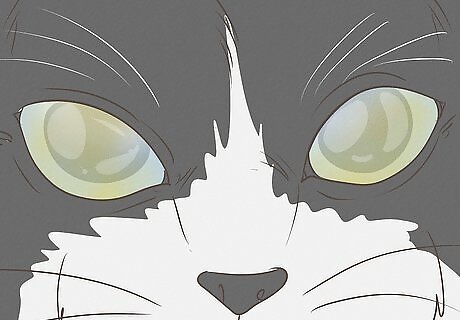
Consult with the vet to manage glaucoma. Glaucoma is a less common cause of swollen or bulging eyes. However, an injury or infection that resulted in the bulging eye can also cause glaucoma in the future. Glaucoma is incurable, but medications that reduce pressure within the eye and treat inflammation can help manage it. Glaucoma occurs when pressure builds up within the eye due to drainage issues. Injury and infection can cause these drainage issues, so you should take your cat for regular vet exams at least once a year after treating the bulging eye.

Work with the vet to manage feline herpesvirus. Feline herpesvirus (FHV) causes eye infections like keratitis and conjunctivitis that result in swollen or bulging eyes. This often occurs as a result of the eyelids gumming shut and pus collecting behind them. Carefully bathe the eyelids with water to get them to open and release the trapped infection. FHV-related eye infections can be treated with antivirals, but if your cat tests positive for FHV, it will be a carrier for the rest of its life. However, the virus will go into a dormancy period, and there are steps you can take to manage it. Do your best to reduce your cat’s stress level by giving it loving attention, letting it have its space, limiting encounters with other animals or small children, and keeping it indoors. Stress will lead to more frequent recurrences, or flare-ups, of the virus.
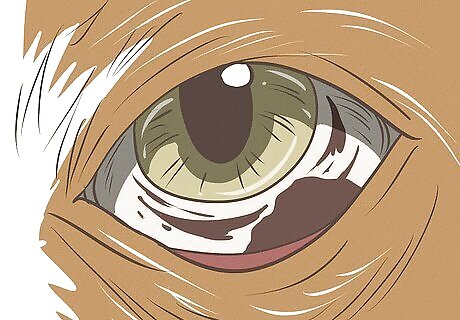
Discuss cancer therapies with the vet. If a malignant tumor has pushed the cat’s eye out of place, immediate surgery will be required to remove the eye and gain access to the tumor, provided the tumor is surgically accessible. Your vet will likely suggest a chemotherapy regimen in addition to surgical removal. With its high cost and risks, the vet might unfortunately recommend euthanasia over cancer treatment. However, cancer treatment in small animals is a rapidly evolving field, so there might be a therapy or combination of therapies available to manage the tumor.
Identifying the Bulging Eye’s Cause
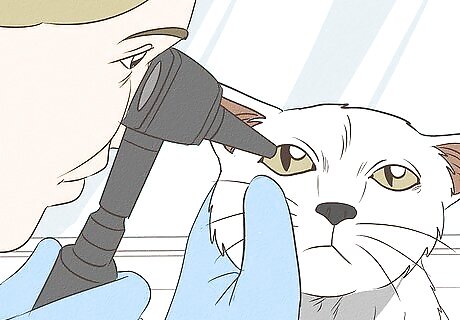
Look closely at your cat’s eye. Take a moment to inspect your cat’s eye closely and then get your cat to the veterinarian right away. As you do this, compare one eye with the other to see if one or both eyes are bulging. Be sure to tell your cat’s veterinarian anything you noticed about the bulging, but don’t worry if you cannot identify what exactly is bulging. Your veterinarian will examine your cat closely and use tests to help them determine the cause of the problem. Some of the potential causes of bulging may include: Something pushing on the back of the eyeball causing it to bulge out, such as an abscess or a tumor. Swelling in the eyeball itself, such as with glaucoma. Swelling in the tissues surrounding the eyeball, such as in the eyelid.
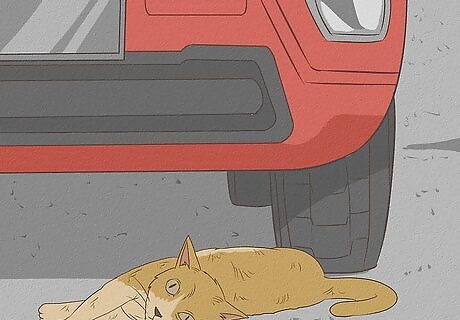
Determine if the cat suffered an injury. Being hit by a car, getting into a fight with another animal, and other traumatic injuries are common causes of a bulging eye in cats. Traumatic injury is the most likely cause if the bulging eye developed suddenly with no prior symptoms of infection, like squinting, discharges, or gradual swelling. Bring a cat with a traumatic injury to the vet as soon as possible to reduce the risk of vision loss and other complications. If the cat’s eyeball is out of the socket and hanging, then this is also an emergency requiring immediate veterinary treatment. You can soak a gauze swab in some saline solution and place it over the eye to help prevent it from desiccating. Take the cat to the vet immediately after that.

Look for a foreign body. Examine the eye and socket for an obvious penetrating injury or for small pieces of glass, metal fragments, sand, or other small objects. Call the vet and ask if you should attempt to flush small objects with saline solution before bringing the cat to the office or en route. Do not attempt to remove larger objects that penetrate the eye or socket.
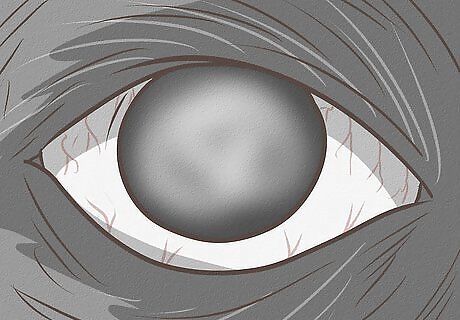
Check for discharges, plaque, or lesions. Examine the eye and surrounding skin for signs of infection. Look for clear or pus-filled discharges, cloudiness, and white or pink plaque or lesions on the surface. If the cat showed any gradually worsening symptoms before the bulging eye became obvious, a bacterial or viral infection is a likely cause.
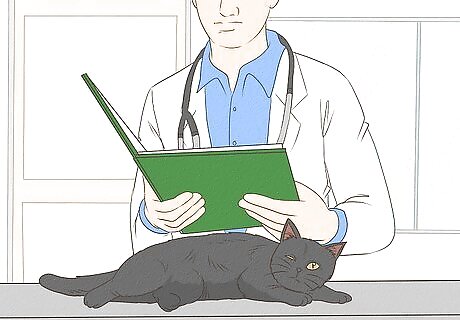
Bring the cat to the vet as soon as possible. As you make your first observations of the injury or infection, call a vet and advise them that you’ll be bringing a cat with a bulging eye to their office. Be prepared to report as many details as possible, including: The cat’s medical history, if known. Whether the cat suffered a traumatic injury and if any foreign bodies are present. Foods it’s recently eaten. Whether the bulging eye developed suddenly or if you observed prior signs of infection. Its vaccinations, including whether it was vaccinated against feline herpesvirus (FHV).

Have the vet take a blood test and culture. The vet will give the cat a physical examination and, if injury isn’t the obvious cause, take samples of blood and corneal (surface of the eye) tissue. They’ll take a complete blood count and test the samples for viral and bacterial infections. They might also test for allergies, especially if cultures showed no signs of infection. You can also request dental x-rays. Your vet may x-ray the cat's teeth roots to see if a tooth root abscess may be pushing the eye forward from behind.
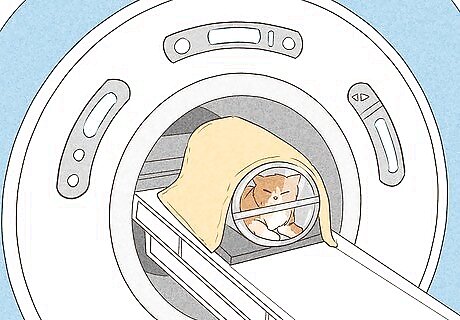
Consider giving the cat an MRI. If the vet rules out causes such as injury, infection, or allergies, they might suggest administering an MRI. The bulging eye could be caused by an cancerous or benign tumor. If a scan reveals a tumor, or if the vet suspects a tumor is present, they’ll take a sample for biopsy to determine if it’s malignant.




















Comments
0 comment